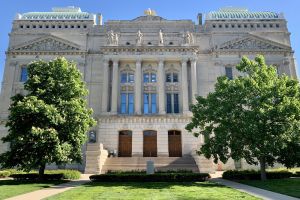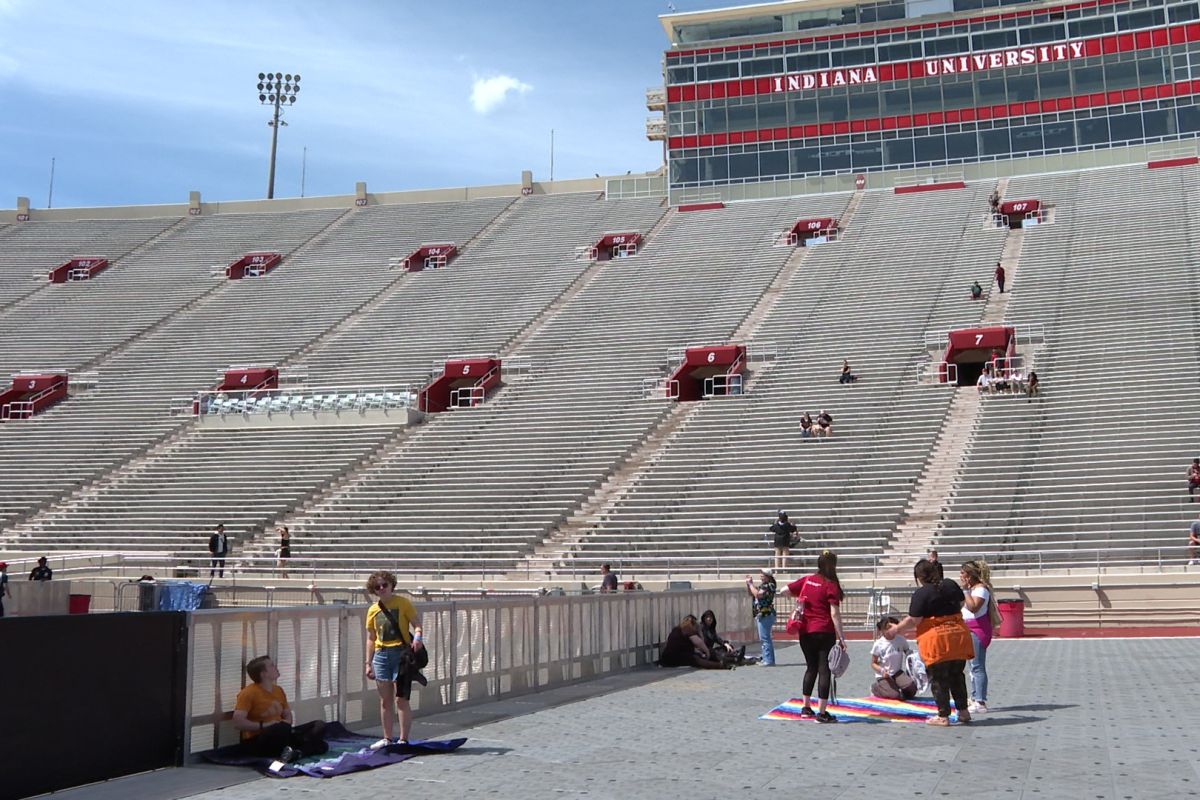
Local officials and business organizations expected up to 300,000 people to visit Monroe County for the eclipse. Now, they estimate crowds were far smaller than anticipated on Monday. (Lucinda Larnach / WFIU-WTIU)
Local officials and business organizations told Monroe County residents to prepare for gridlock, sold-out supermarkets and cell network disruptions because of hundreds of thousands of tourists for Monday’s eclipse. Instead, residents experienced something comparable to a game day at IU.
Visit Bloomington’s Executive Director Mike McAfee told Indiana Public Media in December that he expected between 75,000 and 200,000 people to visit Monroe County on April 8. In March, he said experts predicted as many as 250,000 to 300,000 visitors.
Now, McAfee isn’t sure where those estimates originated.
“I really don’t,” he said. “Just reading online reports and things like that. So maybe it was a mistake to look at the internet and take those estimates that you read in different articles from media reports and things like that.”
McAfee says all the information isn’t in yet, but that “based upon talking with partners and friends about things that were going on, campgrounds, all the various events, I would say we came close to a large sold-out football game type crowd: 50,000 or so.”
The city and Visit Bloomington both say it’s too early to know the actual number of travelers. Christopher Emge from the Greater Bloomington Chamber of Commerce said those figures will become clearer in a few weeks when figures come in for Monroe County’s food and beverage tax and innkeeper’s tax.
Still, the agencies, departments and businesses involved in planning have a rough idea of the numbers.
Public safety, law enforcement, traffic
Extra caution seemed warranted based on popular predictions. The Indiana Destination Development Corporation (IDDC) told the public the eclipse would be the “single largest tourist event to ever happen in the state.” Greatamericaneclipse.com estimated between 145,000 and 581,000 visitors would travel to Indiana in total.
McAfee said he spoke with other destination marketing organizations from college towns such as Columbia, Mo., that were in the path of the 2017 eclipse.
“They told us they did somewhere between 40 and 60,000 people,” he said.
Several notable differences exist between the 2017 and 2024 eclipses. Thirty-two million people live in the path of totality for Monday’s eclipse compared to 12 million for the prior. More Americans could watch from home this year, and there were more destinations available for tourists to choose.
The last eclipse also missed Indiana, while totality covered many of the state’s major cities in 2024. Bloomington competed against towns such as Indianapolis, Evansville and Muncie for visitors. Fifty-thousand people visited the Indianapolis Motor Speedway alone.
According to INDOT, I-65 between Lafayette and Indianapolis saw a large increase in traffic. Rest stops and Indiana interstates in the path of totality were at or near capacity.
Still, those 2017 numbers factored into the plans of the City of Bloomington, Indiana University and Monroe County.
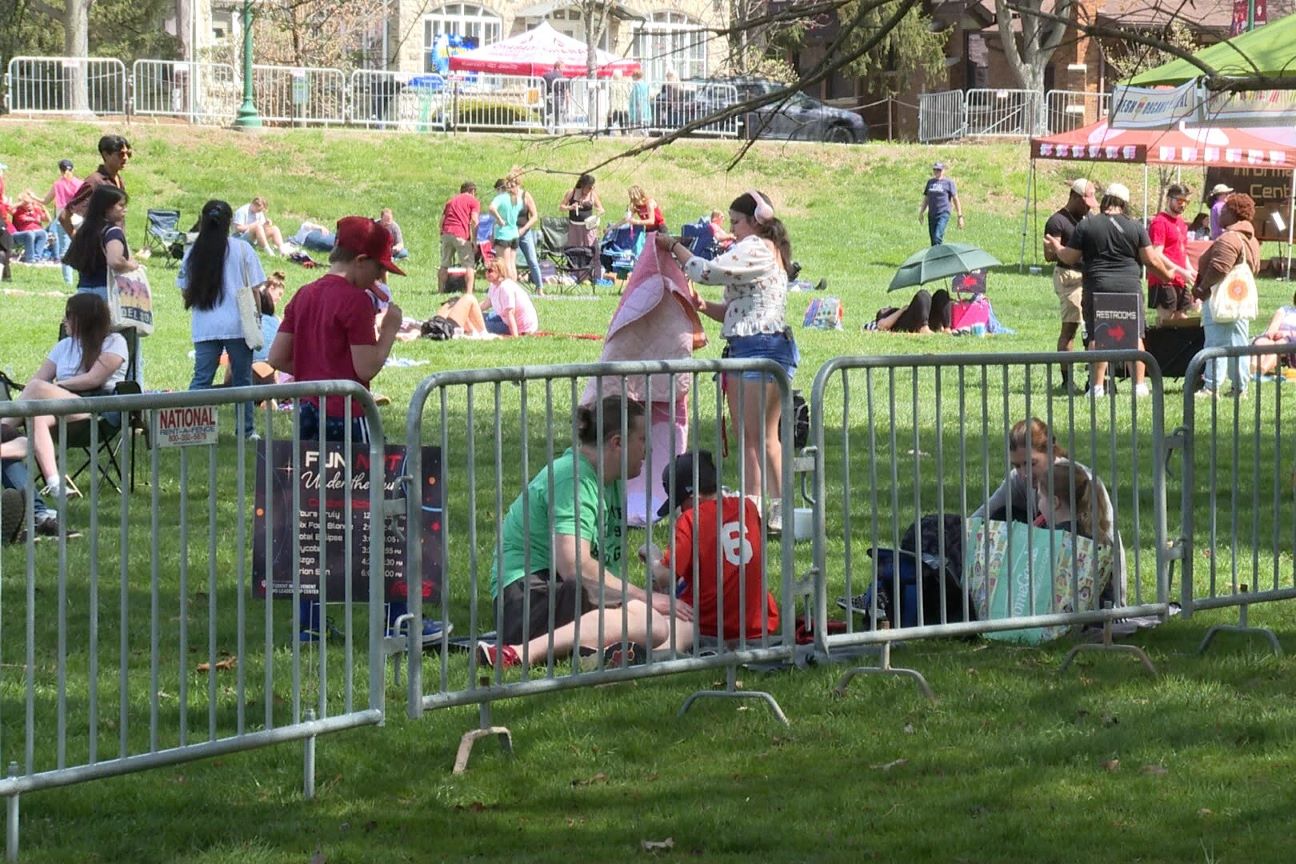
Bloomington Mayor Kerry Thomson said in a March press conference that she expected 300,000 visitors and prepared by mobilizing extra police and fire department workers.
In the same conference, IU Associate Vice President for Public Safety Benjamin Hunter said the IUPD was preparing for “several hundreds of thousands of people” in Bloomington by scrambling police officers on campus and coordinating with other agencies on traffic control and emergency response.
But when the day came, officers found their workload to be manageable.
Justin Baker, deputy director of the Monroe County Emergency Management Agency, ran an emergency operations center on the day of the eclipse to coordinate between different law enforcement and emergency services providers but said Tuesday that “there were no long travel delays or heavy congestion." Captain Ryan Pedigo of the Bloomington Police Department said Monday traffic enforcement was calmer than usual for his team.
“We were told by agencies that had experienced a total eclipse in the past to expect extremely heavy traffic today leading up to the event,” he said. “Officers only investigated five vehicle crashes (Monday) between the hours of 7 a.m. and 6:30 p.m., which is significantly less than the number of crashes that BPD investigates on a normal weekday.”
Randy Jacobs, captain of operations at the Monroe County Sheriff’s Department, said the busiest traffic was downtown from mid-morning to the afternoon. Overall, he reported “very little traffic and no traffic-related incidents related to the eclipse event.”
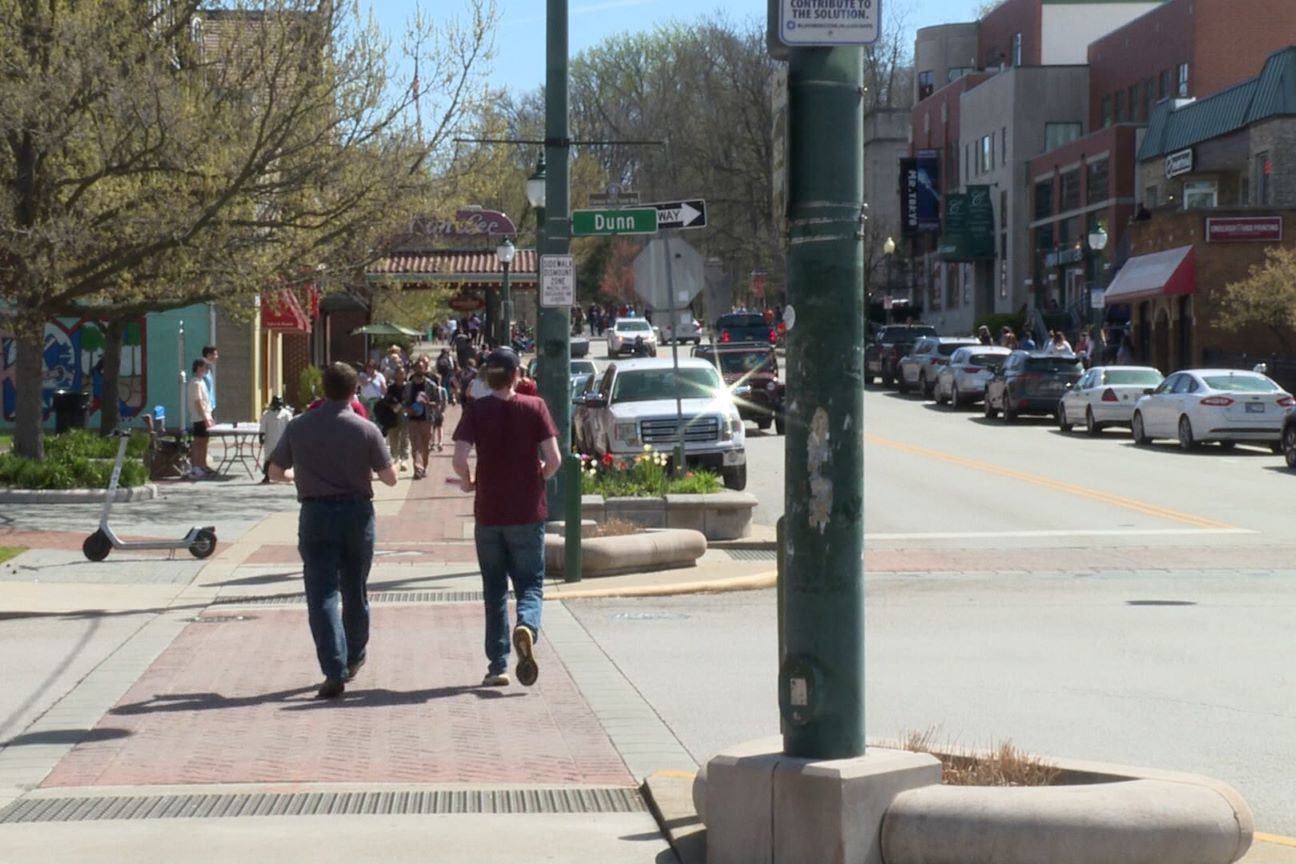
“It’s not even close to what we were expecting,” he said. “We were prepared for a large number of visitors, but that wasn’t happening.”
Some of that calm could be attributed to local preparations.
Even if the influx didn’t live up to expectations, tourists still came to Bloomington by the thousands from around the country. Bloomington Director of Public Works Adam Wason said spacing out events and preparing locals for busy roads likely alleviated gridlock.
“We heard that the campgrounds around Lake Monroe and the other campground areas were very full with people. You had events around campus and up by the stadium where people could kind of spread out and disperse,” he said. “I think a lot of different factors helped with it being a slightly less busy day than we expected.”
Local employers, including the city and county, told public employees to work from home, and both IU and MCCSC canceled in-person classes. Wason said that sanitation services jokingly asked if they could do this every Monday.
“I would always, in my role as a public official, rather be over-prepared than underprepared,” he said. “So yeah, we were probably over-prepared for this event, but we also only had the recent past example of the Western Kentucky Hopkinsville area as our main resource of what to possibly expect.”
Parks, events, air travel
City- and state-run parks saw some of the largest crowds.
Julie Ramey, community relations manager for the City of Bloomington Parks and Recreation department, estimated 8,000 people came to Switchyard Park to watch the eclipse.
Parking at the Paynetown State Recreation Area at Lake Monroe was approximately 54 percent full Monday, according to Monroe County Emergency Management, although the Indiana Department of Natural Resources said its 320-site campground was at capacity. Likewise, Hoosier National Forest fully booked its campground. The DNR added that Morgan-Monroe State Forest had an estimated 900 guests and 200 vehicles.
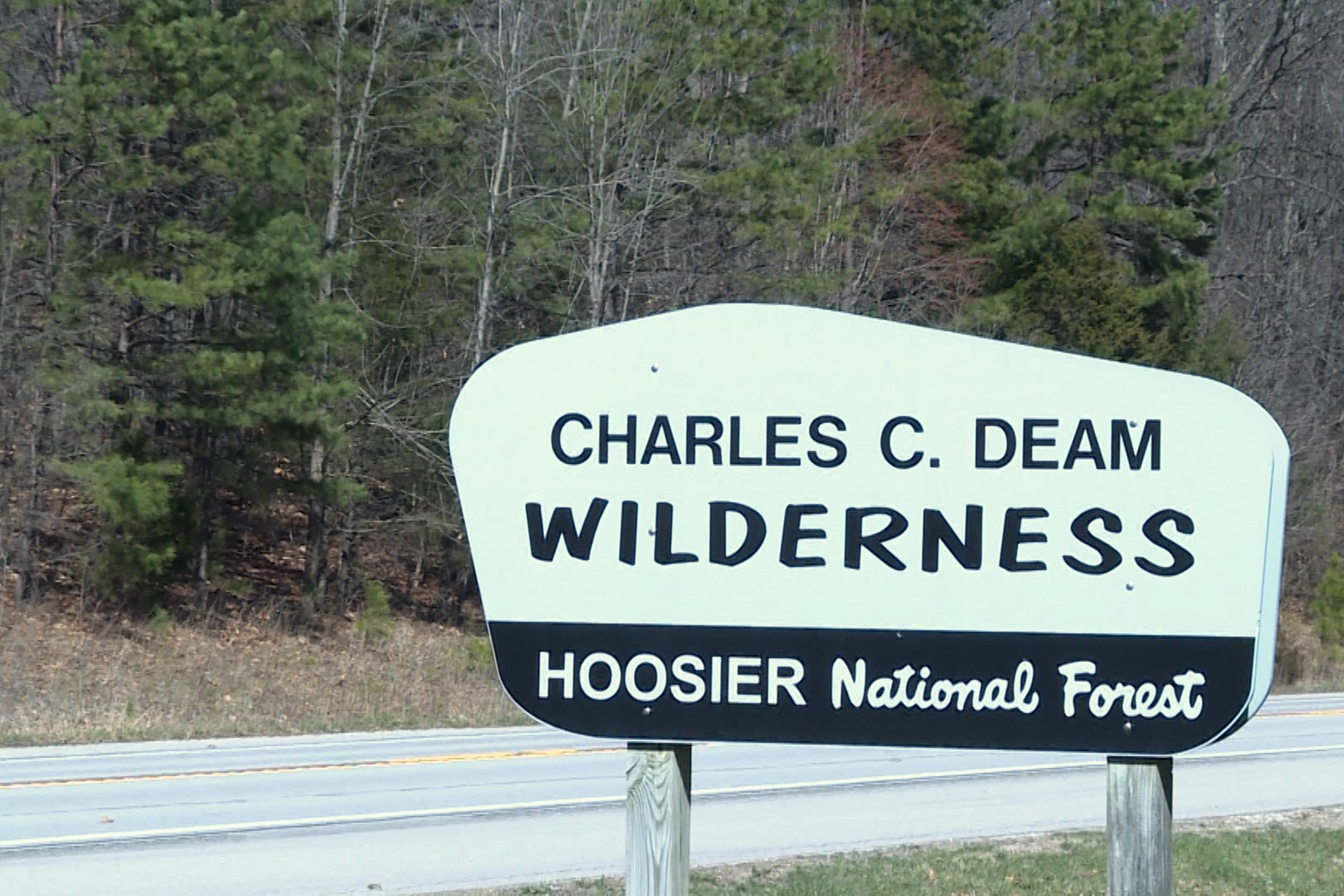
The Monroe County Fairgrounds also admitted 103 cars Monday. It had initially planned to host Shadowfest, a music festival that hoped to attract hundreds of tourists, but the Fair Board canceled the event in February.
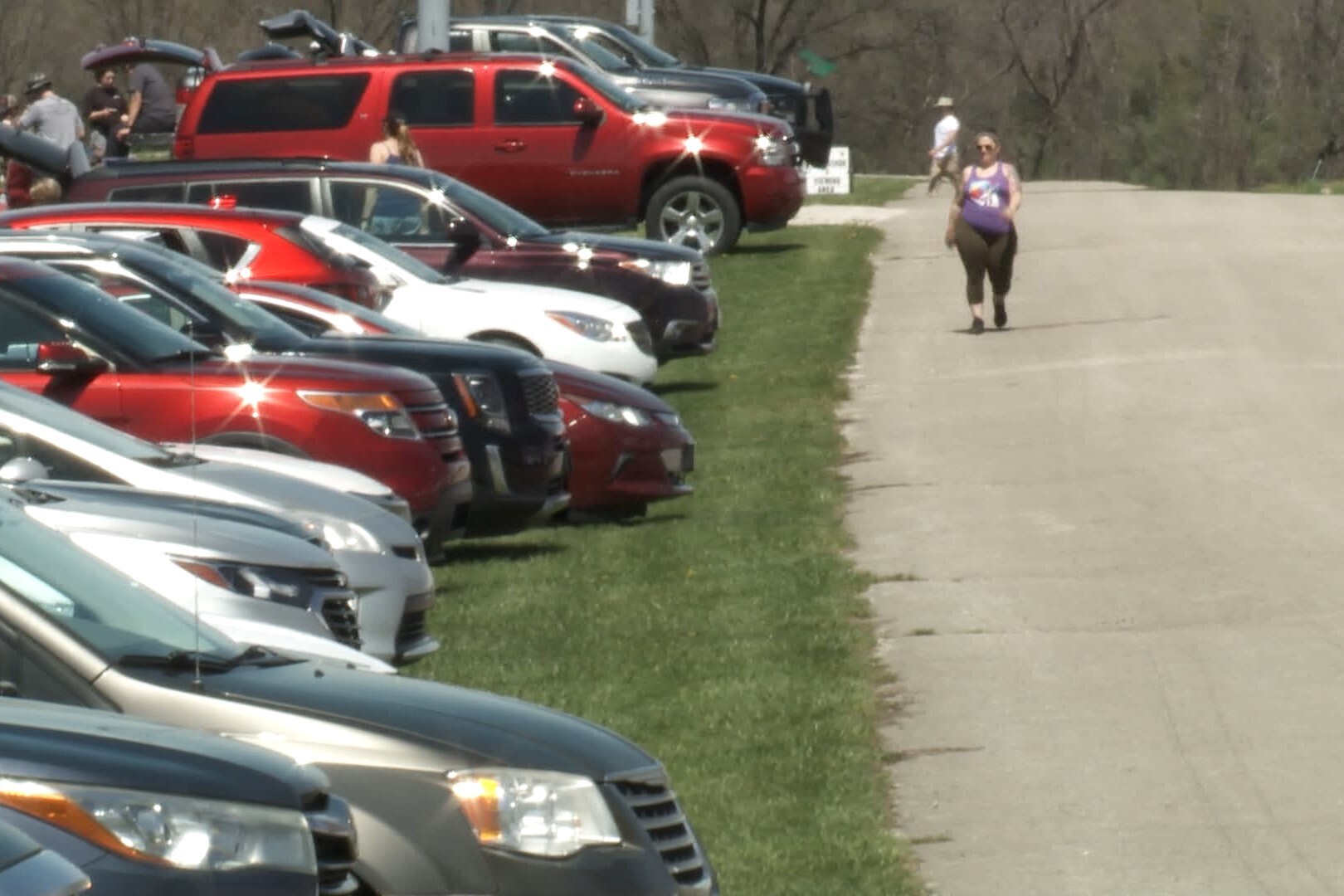
Perhaps the most anticipated Eclipse Day event was the Hoosier Cosmic Celebration at IU’s Memorial Stadium. Star Trek actor William Shatner and Grammy-nominated singer Janelle Monáe headlined the ticketed event that afternoon. The crowd was smaller than anticipated.
The IU Auditorium said it distributed 9,397 tickets, including those it gave to students for free in the week leading up to the eclipse. The auditorium added that it didn’t have access to total attendance numbers, but it estimated only around 3,000 to 4,000 guests turned up. IU wasn’t able to provide final numbers in time for publication, but the Monroe County Emergency Management Agency estimated around 4,000 vehicles parked at the stadium lot.
Landings at the Monroe County Airport also fell short of predictions.
Carlos Laverty, airport director, had talked to other airports in the path of totality during the 2017 eclipse; some had gotten up to 400 extra planes. The Monroe County Airport installed a reservation system to account for the potential of up to 200 extra planes. Laverty limited the number of landings to 135, though only about 100 actually came. He attributes the number to Monday morning’s cloudy conditions.

“The people who were planning on arriving at the airport, early in the morning, when they were checking the weather at our airport, they probably said, ‘oh, shoot, you know, maybe I don't want to try this,’” he said. “I think that scared away about 30 of our inbound aircraft.”
Hotels did perform as expected. Matthew Hazen, assistant general manager of the Graduate Hotel, said that it sold out rooms Monday night and attendance at its rooftop event “was about what we anticipated.”
Visit Bloomington releases data every few weeks on hotel occupancy. McAfee said those numbers aren’t in yet for the eclipse, but that “by Thursday of last week, most of them were sold out or near capacity.” According to Visit Bloomington, the market has about 3,000 lodging beds. Prices at local hotels that Monday hovered over $700 per night.
“We didn’t have a massive crowd of 100,000 somewhere by any means,” McAfee said. “We had a few thousand people in several spots spread out and leaving and arriving at a different time. I thought it was a great event.”
Grace Marocco contributed to this report.









